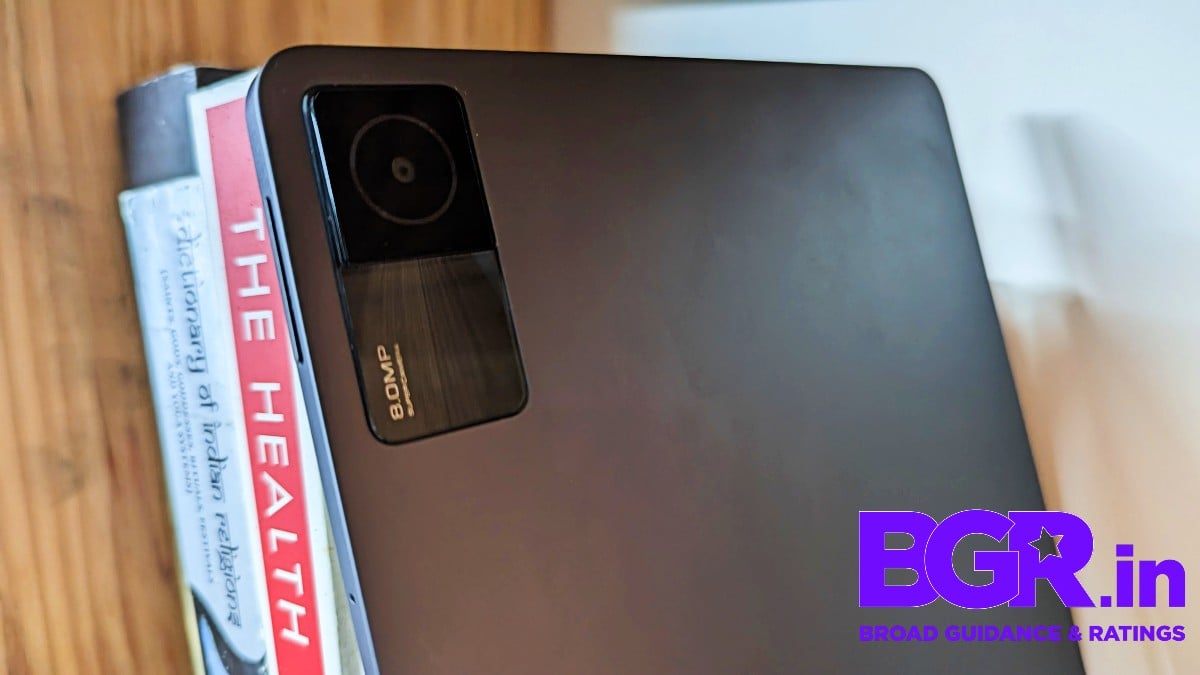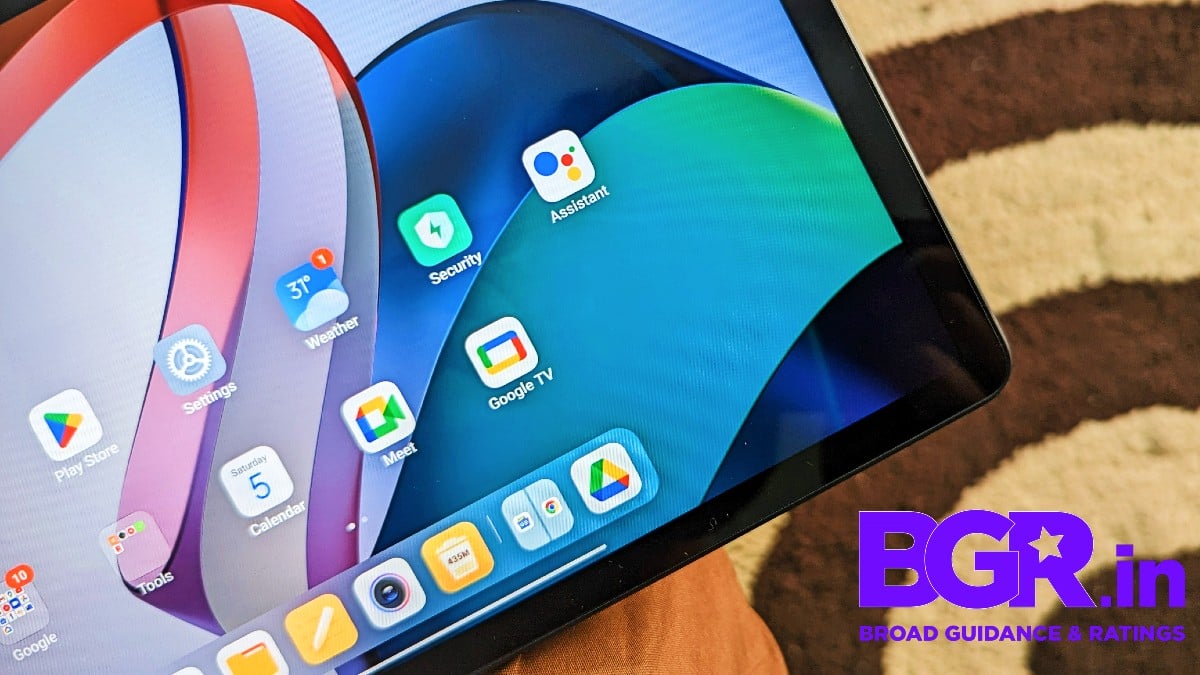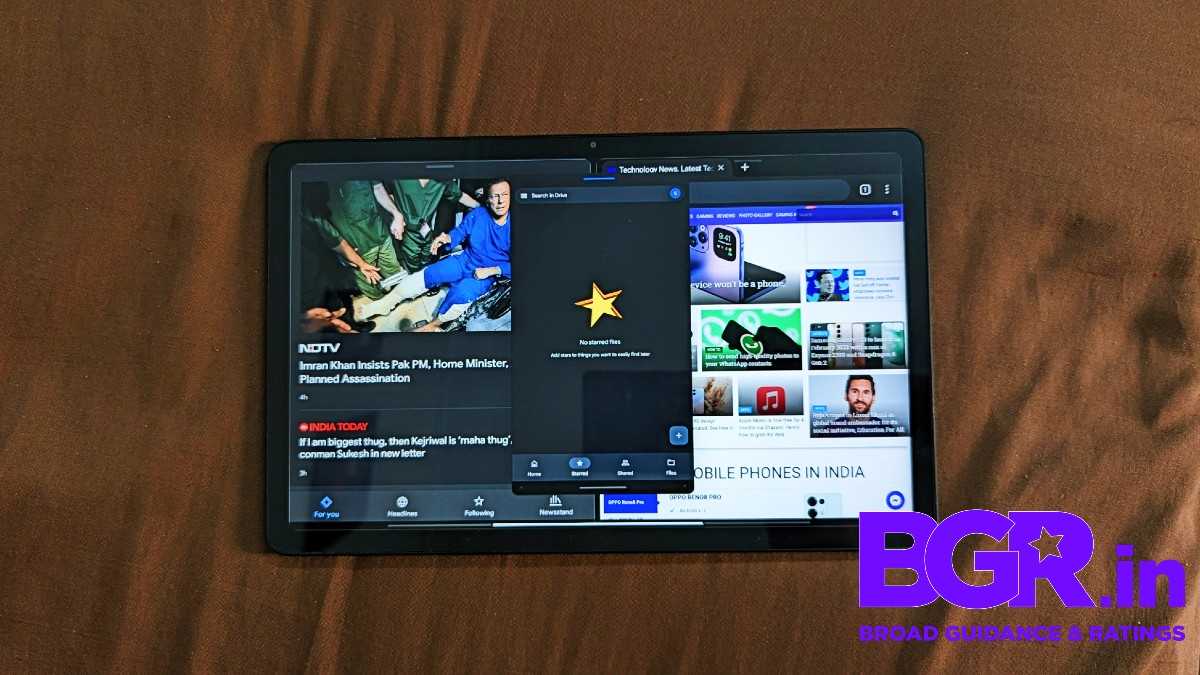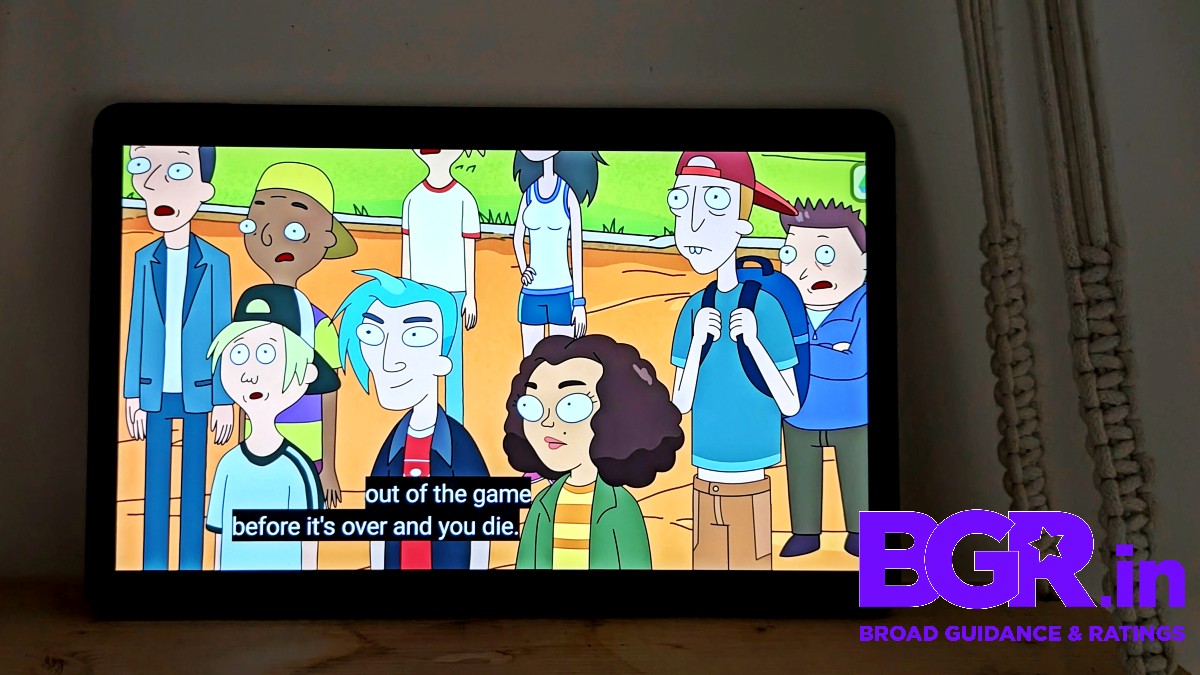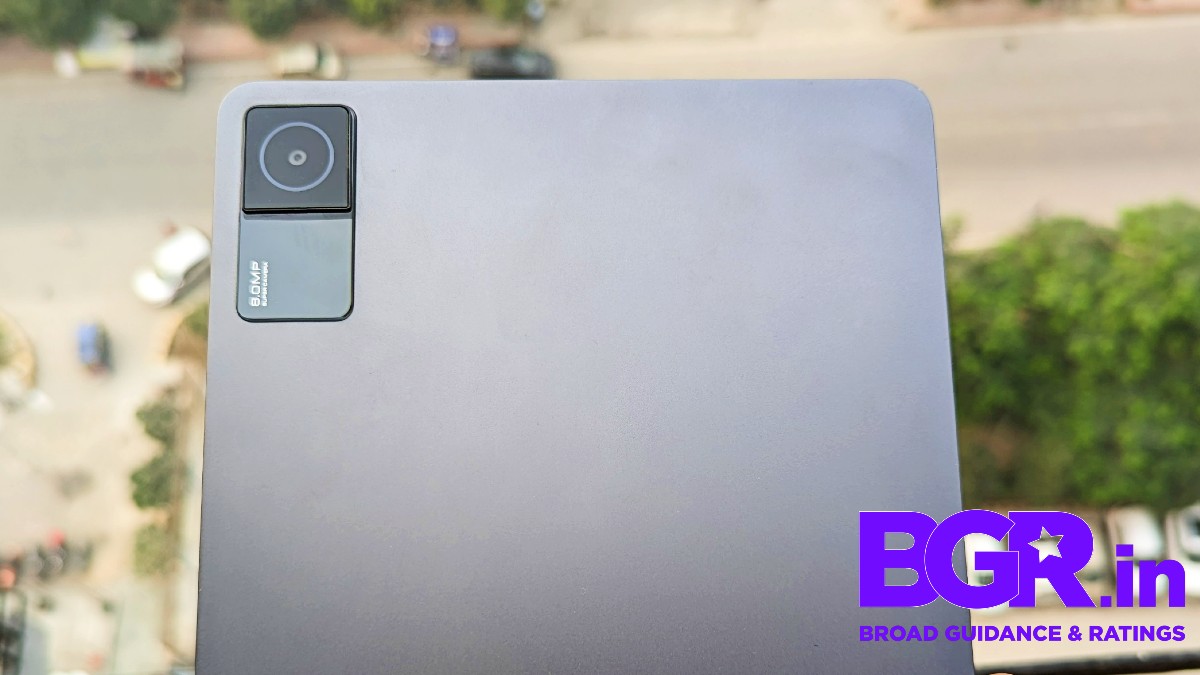Redmi broke off from Xiaomi to cater to the masses. That means its products are affordable but with as few compromises as possible. The latest in the series of such products is a new tablet. It’s called the Redmi Pad. Think of it as a slightly toned-down version of the Xiaomi Pad 5, which received rave reviews for being a total value-for-money tablet. Well, the Redmi Pad is attempting to be the same — for a lower price.
Launched at an offer price of Rs 11,700, the Redmi Pad was unmistakably one of the attractive options on the market for Android tablets. Although that price is no longer valid, the charm of the Redmi Pad should continue considering the original price is not high either. It now costs Rs 14,999 and for that price, brings a big display, a premium design, and the goodness of Xiaomi’s tablet-centric software. But is it a good tablet and should you spend on it? I have the answers.
Redmi Pad review: Sleek and stylish
Right off the bat, the Redmi Pad comes across as a high-end tablet. That’s when you are not sure about the specifications and are just looking at it. Redmi’s first tablet uses an all-metal body with a flat design that I find appealing. Less expensive tablets can be good looking and the Redmi Pad proves that right. What about the weight, you may ask since the externals are made of metal? Redmi has been clever here. While the weight of the Redmi Pad is 465 grams, it feels lighter than that, thanks to good weight distribution. An advantage of this is that I could hold the tablet for a longer period.
The Redmi Pad wants to be your video-calling device because online learning and working are the new norms. That is why the front camera is on the longer side of the tablet, so you get to use the tablet to its fullest potential in landscape mode. That’s how video calls are meant to take place, aren’t they? The bezels are also thin, giving the display real estate more room to breathe. I like how the company paid attention to detail by giving slightly thicker bezels on shorter sides of the tablet, so when you hold it in landscape mode, you don’t unintentionally obscure any part of the screen.
The Redmi Pad comes in three colours: Graphite Grey, Moonlight Silver, and Mint Green. I have reviewed the first colourway, and while I liked it, I am sure the other two options would look stylish, too. Other essentials of the design include a slightly protruding camera island, which did not cause the tablet to wobble, four speakers (two on each shorter side), a power button on the top edge, a volume rocker on the right edge, a microSD card tray on the right, and a USB-C port on the bottom.
Redmi Pad review: Good display, good entertainment
For a tablet to be really good, its display needs to be big and bright. Redmi’s new tablet has both qualities in its display. At 10.61-inch, the tablet’s display is quite big, which is a good thing if you are into watching movies and shows on tablets. And if you are not, a big display makes space for more content when you are browsing the internet or are on a video call. Even gaming is enjoyable on a big screen. I will get to the tablet’s gaming capabilities a little later, but for everything else, I can say the display is big enough. It also gets adequately bright so I didn’t have to squint to read text on the screen in bright outdoors.
This is a 2K 90Hz display, which means everything looks sharp, smooth, and clear. I finished the entire first season of the House of the Dragon on the Redmi Pad and I liked it. Redmi has got the Redmi Pad Widevine L1 certified, which means you can enjoy full-HD content on OTT services, such as Netflix. There is, understandably, no support for HDR. While colours are mostly accurate, there is a slight shift when you look at the screen in a slanted way. I am nitpicking here because it is not a big problem. That is because the overall experience of watching a movie is good.
Redmi Pad’s speakers are quite loud and belt out a clear sound. After all, they are tuned by Dolby Atmos. But make no mistake because Dolby Atmos is not supported natively on many apps. For instance, the Redmi Pad does not support Netflix’s Dolby Atmos content. However, it would let you activate it through a shortcut on the screen to amplify sound. The Dolby Atmos shortcut works for all music and video apps, but think of it as a software boost only for those apps. The speakers are anyway loud.
I have one gripe though. The display collects a lot of smudges, thanks to the lack of an oleophobic coating. Xiaomi has made sure that the oleophobic coating remains to be one of the mainstays for its devices. I guess it missed that this time.
Redmi Pad review: A decent performer
The Redmi Pad is not a high-end tablet, so you cannot expect it to go against the likes of the iPad. However, at its price, it offers a lot. The Redmi Pad uses a MediaTek Helio G99 processor, which we have used earlier on phones like the Motorola Moto G72. Browsing the tablet and multitasking was fast. I did not face issues with the interface animations, opening heavy apps such as Facebook, or even editing photos.
To push the envelope, I tried playing some games. Now, Redmi claimed the tablet can handle medium-level graphics easily in games such as Call of Duty Mobile. I can say it was not lying. I did not notice any frame drops or lags during the two CODM matches played in medium quality. But when I played Genshin Impact, my experience was not the same, and rightly so. That is a high-graphics game, and expecting the Helio G99 to handle all that would be unfair. During Asphalt, I did notice discernible lags, but they were minor. The Redmi Pad is not a gaming-centric tablet, but you can throw a few games at it every now and then.
Xiaomi has done a good job in terms of optimising the entire software experience for tablets. That shows on the Redmi Pad, as well. The Android 12-based MIUI 13 for the Redmi Pad is visually appealing. It leaves white space a lot to make the interface look clean. It also doesn’t have bloatware, but some essential apps. Apps such as Facebook and Instagram are preloaded. They are essentially stretched out to fill the screen without impacting the aesthetics. There is a dock at the bottom that shows icons of preset apps and the apps you have opened, but it hides when an app is opened. Navigation is smooth, thanks to the high refresh rate on the display.
If you are thinking of buying this tablet for work- or study-related purposes, you should know two things. The Redmi Pad cannot connect to a keyboard magnetically, but you can pair a Bluetooth keyboard and mouse. That will get the typing-related job done. The Redmi Pad’s split-screen works for a few apps, but the company said it is working with developers to bring support for more apps.
The Redmi Pad does not come with a fingerprint sensor, so your options are face unlock and conventional methods such as pin, pattern, and password. Face unlocking is fast, no matter how you hold the tablet. You cannot make cellular calls from the tablet because it doesn’t have a SIM card slot. That also means that you will have to rely on Wi-Fi for internet access.
For my usage, which was pretty basic, the Redmi Pad lasted for more than a day on a single charge. The tablet comes with an 8000mAh battery, which can give you a day’s runtime easily. Since I was mostly checking emails, watching cat videos on Instagram and at least two episodes on OTT every day, the battery ran for over a day. But this will change according to how you use the tablet. Gaming, for instance, would drain the battery more. If you change the refresh rate, you might also be able to a little more juice.
Redmi Pad cameras: Do the job
You get two 8-megapixel cameras, on the front and rear, on the Redmi Pad. The rear camera clicks basic photos with a lack of details, let alone other aspects such as dynamic range. And this is okay considering you are unlikely to use the Redmi Pad to click photos. But for things such as scanning documents, the camera does the job. The front camera is slightly better as it will be used for video calls mostly. But for selfies, the fact that the camera is located on the longer side might affect you end up looking in photos.
Redmi Pad verdict
The Redmi Pad packs a good mix of hardware and software. It has a big screen that can stream movies in good quality, a high refresh rate that makes animations look smooth, a decent processor that can handle multitasking and some gaming well, and a big battery that lasts for more than a day typically. The software is so well-optimised that you will not sorely miss the lack of support for accessories. At Rs 14,999, it is a good option if you are looking for a tablet for online classes and light office work.

